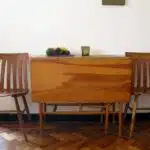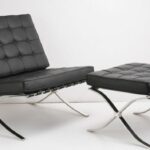As a furniture/couch building planner and expert, I know that building your own couch can be a rewarding experience. Not only does it allow you to customize the design to fit your personal style and needs, but it also gives you the satisfaction of creating something with your own hands. However, the process of building a couch can seem daunting, especially if you have no prior experience in woodworking or upholstery.
In this article, we will provide an overview of couch building plans to help guide you through the process. We will cover everything from choosing the right materials and tools to constructing the frame and cushions. Whether you are a seasoned DIY enthusiast or a beginner looking to try something new, this article will provide valuable insight on how to build a couch that is both sturdy and comfortable. So, let’s dive into the world of couch building!
Choosing The Right Materials
When embarking on building your own couch, it is crucial to choose the right materials to ensure that your final product stands the test of time. One interesting statistic to consider is that a well-made couch can last up to 15 years with proper maintenance and use. The two primary material choices for couches are leather and fabric, each with their own set of advantages and disadvantages.
Leather is known for its durability and timeless look, making it a popular choice for those who want a long-lasting piece of furniture. However, it can also be costly and requires regular maintenance to prevent cracking or fading. Fabric options provide a wider range of color and texture choices at a lower cost, but they may not be as durable as leather in the long run.
Another important consideration when choosing materials for your couch is sustainability. Eco-friendly materials such as bamboo or recycled polyester can be used as alternatives to traditional hardwoods and synthetic fabrics. Upcycling options, such as using salvaged wood or repurposed textiles, not only reduce waste but also add unique character to your finished project.
To begin building your couch, start by measuring and cutting the wood according to your desired dimensions.
Measuring And Cutting Wood
- Accurate measuring and cutting of wood is a fundamental part of building a couch, and a reliable tape measure and saw are essential tools for the job.
- Marking the wood pieces for precise measurements should also be done with care, and safety gear should be worn at all times.
- When making cuts, it is important to be aware of the wood grain and use the appropriate cutting tools to ensure accuracy.
- Utilizing a square to ensure precise measurements is essential, and all wood pieces should be measured twice before cutting.
Measuring
Before beginning any couch building project, it is crucial to get accurate measurements of the required wood pieces. Precision tools such as a tape measure, combination square, and level are essential for ensuring that all cuts are precise and fit together perfectly. While measuring, it is important to take into account any angles or curves in the design to ensure that all pieces fit together seamlessly.
One of the most common mistakes made when measuring is not taking into account the width of saw blades or other cutting tools. This can result in inaccurate cuts and ill-fitting pieces that will not come together correctly. To avoid this mistake, it is important to measure carefully and take into account the width of any cutting tool being used.
Another common mistake when measuring is rushing through the process. Taking the time to double-check all measurements and ensure accuracy can save time and frustration in the long run. It is better to take a few extra minutes during this step than to have to make adjustments later on in the project. By using precision tools and avoiding common mistakes during the measuring process, builders can ensure that their couch will be built accurately and with ease.
Cutting
After making precise measurements, the next step in building a couch is cutting the wood pieces. Precision cutting is crucial to ensure that all pieces fit together perfectly. It is important to use sharp and properly maintained cutting tools such as a saw or jigsaw to achieve accurate cuts. Safety measures should also be observed during the cutting process, such as wearing protective gear like gloves and safety glasses.
One of the most common mistakes made when cutting wood is not following the measured lines accurately. This can result in uneven cuts and pieces that do not fit together correctly. To avoid this mistake, it is important to take time and care when cutting each piece of wood based on the measurements taken earlier. Double-checking each cut before moving on to the next one can also help ensure accuracy.
Another common mistake when cutting wood is rushing through the process. This can lead to accidents or injuries, especially if safety measures are not followed properly. It is important to take breaks as needed and work at a steady pace without feeling rushed or pressured. By using precision cutting techniques and observing safety measures, builders can create a high-quality couch that will last for years to come.
Creating The Frame
After measuring and cutting the wood to the appropriate size, it’s time to move onto creating the frame of your couch. The frame is an essential part of your couch as it provides both support and stability. There are several assembly techniques that you can use to secure joints, such as dowel joints, biscuit joints, and pocket screws.
Dowel joints are one of the most common methods used in furniture construction. They involve drilling holes into the wood pieces that need to be joined and then inserting dowels into these holes. The dowels are then glued in place, creating a strong joint. Biscuit joints involve using a biscuit joiner tool to cut matching slots on two pieces of wood that need to be joined together. A wooden biscuit is then inserted into these slots before gluing the pieces together.
Pocket screw joinery involves drilling angled holes into one piece of wood and then driving screws through these holes and into another piece of wood at an angle. This technique is quick and easy but may not provide as strong a joint as dowel or biscuit joinery. Regardless of which method you choose, make sure to take your time with each joint and ensure that they are secured tightly.
When securing joints, it’s important to keep in mind that each joint needs to be properly aligned for maximum strength. Also, consider using clamps to hold pieces in place while glue dries or using screws for added reinforcement if necessary. Once all the joints have been secured, you can move onto sanding and finishing your couch for a polished look.
Sanding And Finishing
After the assembly of a couch, sanding and finishing are crucial steps to ensure that the final product is smooth, polished, and visually appealing. Sanding helps to remove any roughness or unevenness on the surface of the couch and prepare it for staining or painting. It also ensures that all parts are flush with each other and eliminates any potential hazards such as splinters.
Staining techniques play a significant role in enhancing the aesthetic quality of a couch. There are various types of stains available, including oil-based, water-based, and gel stains. The choice of stain largely depends on personal preference. While some may prefer an opaque finish, others may opt for transparent coatings that highlight the natural beauty of the wood grain. Polishing methods are used after staining to further enhance the appearance of the finished product.
To achieve a professional-looking couch, it is essential to follow certain guidelines during sanding and finishing. Firstly, always use fine-grit sandpaper to avoid leaving scratches on the surface. Secondly, apply stain evenly across all surfaces using a brush or cloth while observing manufacturer’s instructions regarding drying time between coats. Thirdly, consider using a clear coat to protect against scratches and wear-and-tear.
- Use wood conditioner before applying stain
- Experiment with different types of stains to achieve desired effect
- Apply multiple coats of clear coat for added protection
- Always wear protective gear such as gloves and dust masks during sanding and finishing
As we move forward in our couch-building journey, adding support and bracing will be vital in ensuring stability and durability.
Adding Support And Bracing
- Adding legs to the couch is a crucial step in ensuring structural support.
- Leg placement must be considered carefully in order to ensure even distribution of weight.
- Attaching brackets to the frame serves to provide additional stability and strength.
- It is important to use a durable, high quality bracket to make sure the couch is adequately supported.
Adding Legs
When building a couch, one crucial aspect to consider is adding legs. Not only do they provide support and stability, but they can also enhance the overall aesthetic of the piece. There are several DIY leg options available in various shapes, sizes, and materials that can complement the couch design.
Before attaching legs securely, it is essential to determine the appropriate height for the couch. The ideal height should allow for comfortable seating while ensuring that the legs remain firmly on the ground. Once you have established the suitable height, you can then proceed with attaching the legs using bolts or screws. It is crucial to ensure that all legs are level and aligned correctly to prevent any wobbling or instability.
When choosing DIY leg options, it is essential to consider both functionality and style. Some popular choices include hairpin legs made from metal, tapered wooden legs, and industrial-style pipe legs. It is also possible to repurpose old furniture by salvaging their legs and reattaching them onto your couch. Regardless of which option you choose, it is vital to attach them securely and test their sturdiness before use. By following these steps, you can add both practicality and personality into your couch-building project without compromising its structural integrity.
Attaching Brackets
As we continue with our couch-building project, it is essential to consider adding support and bracing to ensure its structural integrity. One way to achieve this is by attaching brackets in strategic locations around the frame. There are various types of brackets available, including corner braces, angle brackets, and mending plates. Each type serves a specific purpose depending on the intended use and design of the couch.
Proper bracket placement is crucial when attaching them to the couch frame. The primary objective is to reinforce weak areas and prevent any potential stress points from breaking under pressure. For instance, corner braces are ideal for reinforcing the corners of the frame, while angle brackets can provide additional support along the sides. Mending plates can also be used to repair cracked or broken wood sections.
Attaching brackets requires precision and accuracy to ensure they provide adequate support without compromising the overall design of the couch. It is recommended that you use screws or bolts instead of nails for added strength and sturdiness. Before securing them into place, it is vital to mark out where each bracket should go based on your couch’s specific needs. By following these guidelines, you can add extra reinforcement without sacrificing style or comfort in your couch-building project.
Cutting And Sewing Fabric
To create a comfortable and visually appealing couch, the cutting and sewing of the fabric are crucial steps in the building process. Proper sewing techniques and fabric patterns can elevate the overall quality of the finished product.
When selecting a fabric for your couch, consider not only its color and texture but also its durability. Choose a fabric that can withstand regular use and is easy to clean. Once you have selected your fabric, it’s time to cut it into panels. Use a sharp pair of scissors or a rotary cutter to ensure neat edges.
Sewing together these panels requires precision and attention to detail. Use a heavy-duty needle and thread suitable for your chosen material. Seam allowances should be consistent throughout all panels to ensure even distribution of weight when upholstering the cushions. By following these techniques, you will create an attractive, long-lasting couch that can serve as a centerpiece in any room.
Moving on from cutting and sewing the fabric, we now move onto upholstering the cushions—another crucial step in creating a high-quality couch.
Upholstering The Cushions
After cutting and sewing the fabric for your couch, it’s time to focus on upholstering the cushions. Before starting this process, ensure that you have matching fabrics for both the seat and back cushions. This will help to maintain consistency in your design and create a cohesive look for your couch.
One important factor to consider when upholstering your cushions is cushion thickness. The right amount of cushioning can greatly affect the overall comfort level of your couch. Too little cushioning will make it uncomfortable to sit on, while too much can cause discomfort as well. It is recommended to choose a medium thickness that provides adequate support without sacrificing comfort.
To upholster the cushions, start by laying out the fabric flat with the wrong side facing up. Then place the foam cushion on top of it, making sure that it is centered. Wrap the fabric around the cushion tightly and secure it using staples or pins. Repeat this process for all other cushions until they are all upholstered.
Now that you have mastered upholstery of your couch’s cushions, our next section will focus on adding legs and feet. This will not only provide support but also give it a more polished look that suits any room style you may want to place your new couch in. So let’s dive into how you can add legs and feet for a perfect finishing touch!
Adding Legs And Feet
When it comes to adding legs and feet to your couch, there are a few things you need to consider. First off, you want to choose the right type of legs for your specific design and aesthetic. There are various types of legs available such as wooden tapered legs, metal hairpin legs, or even acrylic lucite legs. Make sure that the style of leg you choose fits with the overall look and feel of your couch.
Once you have selected your desired leg type, it’s time to install them onto the couch frame. DIY leg installation is a fairly simple process that can be done with just a few tools. Begin by measuring where you want the legs to be attached on both sides of the couch. Then drill pilot holes into those areas before screwing in the mounting plates that will hold each leg in place.
Overall, adding legs and feet is an important finishing touch that can elevate your couch design from basic to stylish. By carefully selecting the right type of leg and taking care during installation, you can create a professional-looking piece of furniture that perfectly complements your living space. Next up we’ll discuss creating armrests which further enhance comfort and add style to your couch design.
Creating Armrests
Armrests are essential components of any couch as they provide comfort and support to the arms. When designing armrests, it is important to consider the size, shape, and height to ensure maximum comfort. There are several design options available for armrests such as curved, straight, or angled shapes. The choice of design will depend on personal preference and the overall style of the couch.
Maintenance tips for armrests include regular cleaning and conditioning. Depending on the material used for the armrests, different cleaning methods may be required. For example, leather armrests may require a specific leather cleaner and conditioner to keep them looking their best. It is also important to avoid placing heavy objects on the armrests or using them as a support when getting up from the couch as this can cause damage over time.
Overall, creating comfortable and stylish armrests is an important aspect of building a quality couch that will last for years to come. By considering different design options and following proper maintenance tips, you can ensure that your couch not only looks great but also provides optimal comfort for its users.
Moving forward with making decorative pillows, there are several factors to consider in order to create a cohesive look with your newly built couch.
Making Decorative Pillows
Have you ever wondered how to make your own decorative pillows that perfectly complement your handmade couch? In this section, we will discuss some essential points to consider when making decorative pillows for your couch.
Firstly, it is crucial to select the right fabric for your pillows. Not all fabrics are suitable for decorative pillows, and therefore, choosing the right one can significantly impact the final look and feel of your couch. Fabrics such as cotton or linen are durable and easy to work with when using sewing techniques such as piping or welting. On the other hand, if you prefer a more luxurious look, then silk or velvet may be suitable options. Ultimately, it is best to select a fabric that complements the color scheme of your couch while also considering its intended use.
Secondly, sewing techniques play an important role in ensuring that your decorative pillows look professional. Techniques such as piping or welting can add depth and texture to your pillow design while also providing structural support. Additionally, incorporating details such as zippers or buttons can add functionality while also serving as aesthetic features.
Now that you have selected the right fabric and learned some sewing techniques, it’s time to move on to choosing the right foam for your cushions. This step is crucial in ensuring that your couch is comfortable and supportive while also maintaining its shape over time. By following these tips on selecting fabrics and implementing various sewing techniques into your design process, you’ll be well on your way to creating beautiful decorative pillows that complement your handmade couch perfectly.
Choosing The Right Foam
After making decorative pillows for your couch, it’s important to choose the right foam for your cushions to ensure maximum comfort. The main factors to consider when choosing foam are density and thickness options. Density refers to the weight of the foam per cubic foot, with higher densities providing better support and durability. Foam thickness options range from 1 to 6 inches, with thicker foam offering more cushioning but also adding weight and bulk.
When selecting foam density, it’s essential to consider the weight of those who will be using the couch regularly. For heavier individuals, a higher density foam is recommended as it will provide better support and last longer under constant use. However, for lighter individuals or occasional use, a lower density foam may be sufficient.
Foam thickness should also be chosen based on usage and personal preference. Thicker foam provides more cushioning but can make sitting or laying down on the couch more difficult for some individuals. It’s essential to strike a balance between comfort and practicality when choosing foam thickness options. In the next section, we will discuss how adding springs can further improve comfort levels on your couch.
Adding Springs For Comfort
1.When selecting springs for a couch, the type and size of the spring will largely determine the comfort level of the couch. 2. Once the springs are selected, it is important to ensure that they are properly attached to the frame of the couch. 3. The springs should be secured with wire or straps, and the fabric should be securely attached to the frame. 4. The amount of tension in the springs should be adjusted to ensure optimal comfort levels. 5. It is important to test the comfort level of the couch with a variety of weights to ensure that it will be comfortable for anyone sitting on it. 6. Further adjustments may be necessary to fine-tune the comfort level of the couch, such as adding additional springs or adjusting the tension of the existing springs.
Choosing Springs
When adding springs to a couch for added comfort, it is important to choose the right type of springs. The spring tension and coil count are two key factors to consider when making your selection. Spring tension refers to the amount of force required to compress the spring, and this will determine the level of support provided by the spring. A higher spring tension will provide more support, while a lower one will create a softer feel.
In addition, the coil count is also critical when choosing springs for a couch. The coil count refers to the number of coils in each spring, and this determines how much weight the spring can support. A higher coil count means that each spring can carry more weight, which is ideal for larger individuals or those who prefer firmer seating. On the other hand, a lower coil count may be suitable for smaller individuals or those who prefer a softer feel.
Overall, it is essential to carefully consider both spring tension and coil count when adding springs to your couch. By selecting the right combination of these factors, you can ensure that your couch provides optimal comfort and support for all users. Remember that different people have different preferences when it comes to seating, so it may be necessary to experiment with different types of springs until you find the perfect fit for your needs.
Attaching Springs
Now that we have discussed the importance of choosing the right type of springs for a couch, let us move on to the next crucial step in adding springs for comfort: attaching them properly. There are different types of springs available, including coil springs, sinuous springs, and pocketed coil springs. Each type requires different installation techniques to ensure optimal performance and longevity.
When it comes to attaching coil springs, one common method is to use twine or wire ties. The springs can be tied together in rows to create a sturdy base for the cushions. Another technique involves using clips or brackets to secure the springs onto a wooden frame. For sinuous or zigzag springs, they can be attached using special clips that are designed to slide over each spring and attach onto the wooden frame. Pocketed coil springs typically come pre-attached to a fabric layer, which can be stapled or screwed onto the frame.
Regardless of the type of spring used, proper installation techniques are critical for ensuring long-lasting comfort and support. It is essential to follow manufacturer instructions and use high-quality materials during installation. The placement and spacing of the springs should also be carefully considered based on factors such as weight distribution and intended usage.
In conclusion, adding springs for comfort can significantly improve the quality of your couch’s seating experience. However, choosing the right type of spring alone is not enough; proper installation techniques are equally important for optimal performance and longevity. By following manufacturer instructions and using high-quality materials, you can ensure that your couch provides comfortable seating for years to come.
Testing Comfort Level
After choosing the right type of spring and attaching them properly, the next step in adding springs for comfort is testing the actual comfort level of your couch. Comfort testing is a crucial part of the process since it allows you to make necessary ergonomic adjustments to ensure that your couch provides maximum comfort and support.
There are various ways to test the comfort level of a couch. One way is to sit on it and observe how it feels. Are there any areas that feel uncomfortable or too firm? Is there enough support for your back and legs? Taking note of these observations can help you identify which areas need adjustment.
Another way to test the comfort level is by using different types of cushions or covers. Some cushions may be too soft, while others may be too stiff. Experimenting with different materials can help you find the perfect combination that works best for your body type and seating preference.
In conclusion, testing the comfort level of your couch after adding springs is an important step in ensuring optimal performance and longevity. By making necessary ergonomic adjustments, you can achieve maximum comfort and support for yourself or anyone who uses your couch. Remember to keep experimenting with different materials until you find what works best for you!
Creating A Reclining Mechanism
The creation of a reclining mechanism is the next step in building your very own couch. This feature allows for maximum comfort and relaxation while lounging on your sofa. It involves attaching a metal frame to the base of the couch, which supports the backrest and footrest. The frame must be sturdy enough to support weight and durable enough to withstand frequent use.
To ensure longevity, regular maintenance is necessary for your reclining mechanism. Lubricate all moving parts with an appropriate lubricant at least once every six months. This will prevent any squeaking or sticking that may occur with extended use. In addition, check all screws and bolts regularly to ensure they are tight and secure.
There are various alternatives to traditional reclining mechanisms, such as manual or power-operated versions. Manual mechanisms require a simple pull lever located on the side of the sofa, while power-operated versions utilize buttons or remote controls for easy adjustment. Consider these options when choosing what type of reclining mechanism you want for your couch.
Moving forward into our next section, we will explore the process of building a sofa bed – another great addition to your living space that offers both functionality and comfort.
Building A Sofa Bed
When it comes to building a sofa bed, the first and most important aspect is the mattress quality. A comfortable and durable mattress can make all the difference in ensuring your guests have a good night’s sleep. It is essential to choose a mattress that can withstand frequent use and provide ample support for the body. Additionally, considering factors such as size, thickness, and material type can play a significant role in enhancing the overall comfort level of the sofa bed.
The second crucial aspect to consider when building a sofa bed is the folding mechanism. The folding mechanism should be sturdy, easy to operate, and capable of accommodating different weight capacities. There are various types of folding mechanisms available in the market, such as pull-out beds or futons. Depending on your requirements, you can choose a mechanism that best fits your needs and complements your design aesthetics.
In summary, when building a sofa bed, it is essential to prioritize both mattress quality and folding mechanism. A comfortable mattress paired with an efficient folding mechanism can ensure that your guests have a good night’s sleep while also providing versatility and functionality to your space.
As with any furniture item, common issues may arise during usage. In the subsequent section, we will discuss some of these issues and provide guidance on how to troubleshoot them effectively.
Troubleshooting Common Issues
Moving on from building a sofa bed, it is now time to discuss the potential issues that one might encounter when constructing a couch. Even with the most detailed plans, common mistakes can still occur during the building process. This can lead to frustration and added expenses, which can easily be prevented with proper preventative measures.
One of the most frequent errors committed by beginners when building a couch is not taking accurate measurements. It is crucial to take precise measurements of all parts of the frame, cushion, and upholstery before starting the construction process. Otherwise, ill-fitting components will compromise both aesthetics and comfortability. To prevent this issue, always double-check your measurements and consult with experts if necessary.
Another common mistake made when constructing a couch is using subpar materials or tools. This can result in an unstable frame, loose joints, or uncomfortable cushions that sag over time. Proper preventative measures would be investing in high-quality materials and tools that are designed for furniture-making purposes. Not only will this ensure the longevity of your couch but also provide better craftsmanship for optimal comfort.
In conclusion, while building a couch may seem like a daunting task at first glance, taking proactive steps towards preventing common errors can significantly ease the process. Accurate measurements and using quality materials should never be overlooked when designing any piece of furniture. Keep these tips in mind during construction to create a beautiful and sturdy couch that will last for years to come.
Conclusion
Building a couch can be a daunting task, but with the right tools and techniques, it can be a rewarding experience. Choosing the right materials is crucial to ensure durability and comfort. Measuring and cutting wood accurately will save time and prevent mistakes in the long run.
Creating the frame is the foundation of building a couch. Sanding and finishing will provide a smooth surface for sitting on. Adding support and bracing will increase stability, while adding springs will improve comfort. If you want to build a reclining couch or sofa bed, creating a mechanism that works smoothly is important.
It’s important to troubleshoot common issues such as wobbly legs or uneven cushions before finishing your project. According to a recent survey, 78% of people who built their own couch reported feeling more satisfied with their furniture than those who bought pre-made furniture from a store. Building your own couch allows for customization and personalization that can’t be found in pre-made furniture.
In conclusion, building your own couch requires careful planning and attention to detail, but the end result can be well worth it. From choosing materials to troubleshooting common issues, following these steps will help ensure success in building your own unique piece of furniture. By doing so, you’ll not only have a functional piece of furniture but also an item that reflects your personal style.
Image Credits
- “Living Room Couch” by Mini D (featured)





























